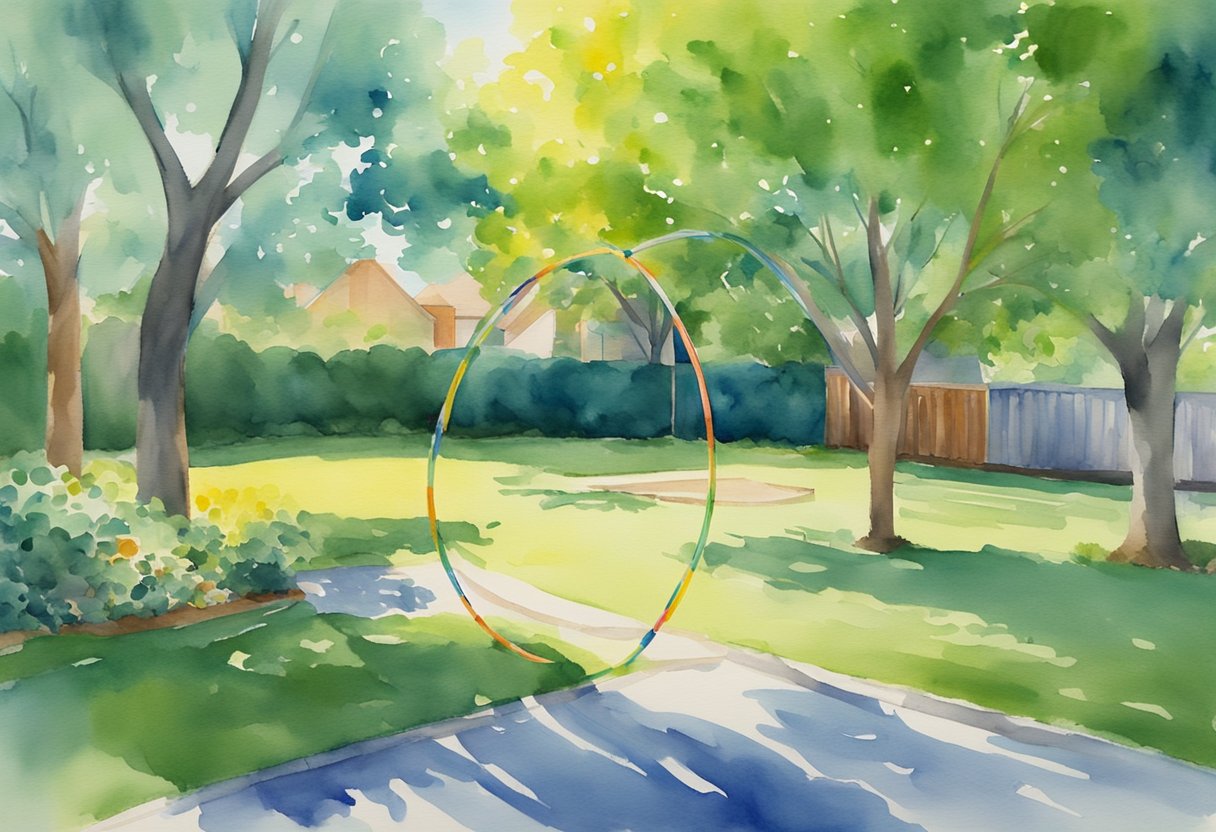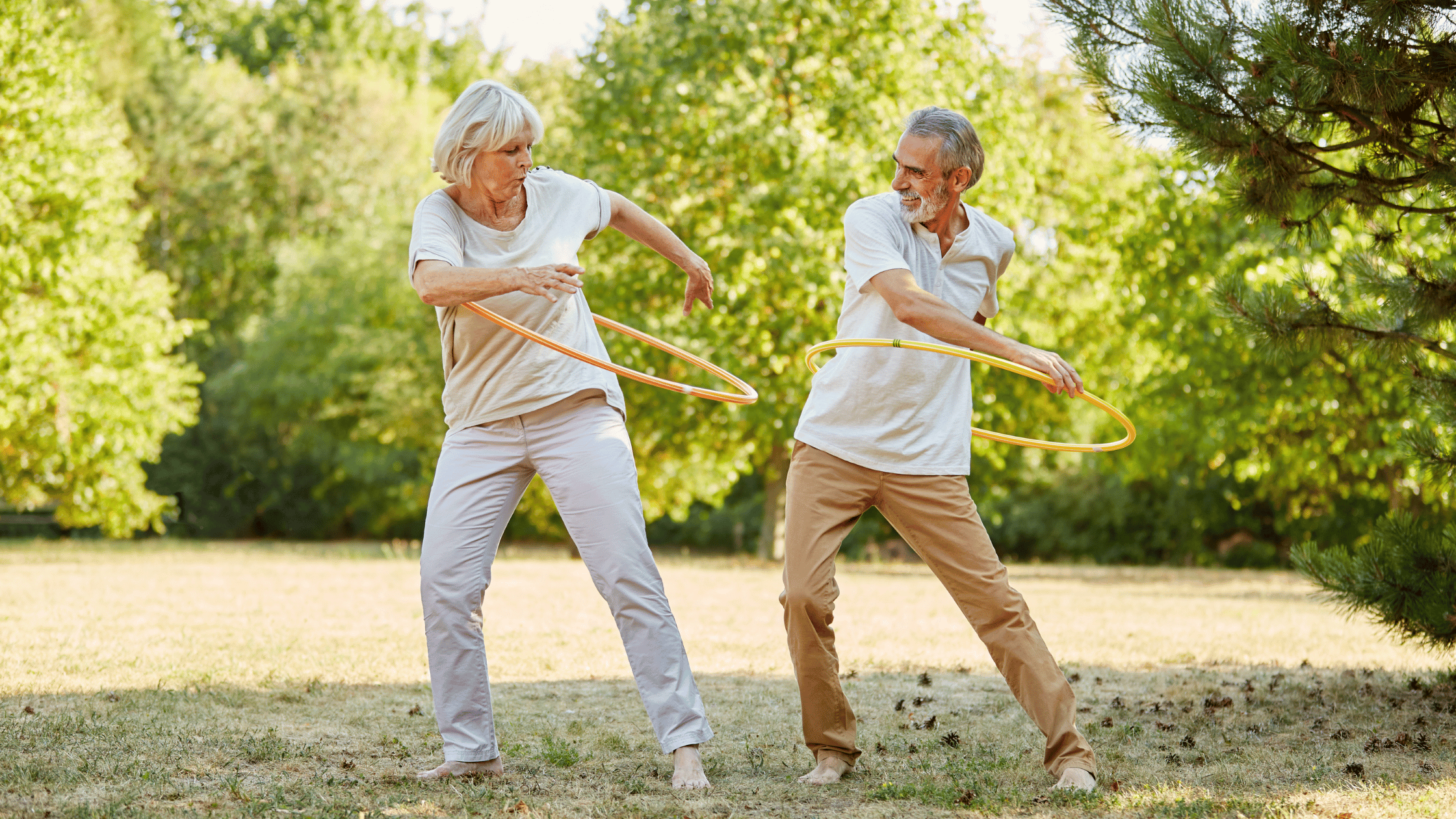Beginner’s Guide to Hula Hooping as a Hobby: Master the Basics and Spin with Confidence
Hula hooping has made a resurgence in recent years, evolving from a fun, nostalgic pastime to a popular hobby and fitness trend.
Embraced by people of all ages and skill levels, hula hooping offers numerous benefits and is an accessible and enjoyable way to stay active.
If you’re a beginner looking to take up hula hooping, this guide will provide valuable insights and tips to help you get started.

The first step to becoming a skilled hula hooper is to select the right hoop. Choosing a hoop that’s tailored to your size and skill level will make learning the basics more manageable and enjoyable.
As a beginner, opt for a larger and heavier hoop, as it rotates more slowly, allowing you more time to master the technique. Once you’ve acquired your hoop, familiarize yourself with the basic movements and gradually build your skills as you practice.
When you’re learning to hula hoop, it’s crucial to be patient and give yourself time to develop muscle memory and coordination. This skill might not come quickly, but with consistent practice, you’ll find your rhythm and soon be hula hooping with ease.
As you progress, you can experiment with various hoop sizes, materials, and techniques to discover your unique style and expand your repertoire of hula hooping tricks.
Choosing the Right Hula Hoop

Understanding Hoop Sizes
When starting your hula hooping journey, it’s essential to select the correct hoop size. Typically, hula hoop sizes vary in diameter and range from 30 to 44 inches. To find the best fit for you, follow these simple steps:
- Stand with your feet shoulder-width apart.
- Place the hoop vertically in front of you.
- A properly sized hula hoop should reach somewhere between your waist and mid-chest.
Here is a general guideline for hoop sizes based on your waist size:
| Waist Size | Hoop Diameter |
|---|---|
| Below 30″ | 32″-34″ |
| 30″-40″ | 36″-38″ |
| 40″-50″ | 40″-42″ |
| Above 50″ | 42″-44″ |
Keep in mind that a larger hula hoop will spin slower, making it easier for beginners to maintain control.
The Importance of Hoop Weight
In addition to size, the weight of your hula hoop plays a significant role in your hooping experience. Weighted hula hoops typically range from 1 to 5 pounds. As a beginner, it’s best to start with a hoop that’s 1.5 to 2 pounds. This weight provides enough resistance to help you build muscle memory and control while not being too heavy or challenging.
Lighter hoops (less than 1 pound) are great for more advanced tricks and fast-paced movements. Unfortunately, they can be more difficult for beginners as they require faster response times to keep them spinning.
Heavier hoops (above 2 pounds) can be beneficial later on in your hula hooping journey to increase your core strength and workout intensity. However, they’re not recommended for beginners, as they can cause discomfort and bruising if used improperly.
In summary, choosing the appropriate hula hoop size and weight greatly contributes to your success as a beginner. Make sure to select a hoop that reaches between your waist and mid-chest, and start with a weight between 1.5 to 2 pounds to ensure a comfortable and enjoyable experience.
Fundamentals of Hula Hooping

Basic Waist Hooping
Waist hooping is the foundation of hula hooping and the first skill to master as a beginner. Start by choosing a hoop that reaches your navel when standing upright. This size will provide stability and make learning the basics easier.
- Stand with your feet shoulder-width apart: Align your body in a comfortable, balanced stance.
- Hold the hoop at waist level: Position the hoop horizontally, making contact with your lower back.
- Give the hoop a strong spin: Push the hoop in the direction you prefer, either clockwise or counterclockwise.
- Rock your hips back and forth: Move your hips in a rhythmic motion to keep the hoop spinning around your waist.
As you practice, your coordination will improve. Remember, everyone learns at their own pace. Dedicate time to daily practice and focus on maintaining a comfortable speed and rhythm. Incorporate a variety of footwear or try going barefoot to explore how different surfaces affect your hooping experience.
Hand and Arm Techniques
In addition to waist hooping, incorporating hand and arm techniques adds flair to your hooping routine. Two popular moves for beginners are the handpass and the spiral:
- Handpass: This technique involves passing the hoop from one hand to another while maintaining control. To practice, stand in a comfortable position and hold the hoop with both hands, palms facing inward. Begin spinning the hoop in one hand, releasing the other. When the hoop reaches the opposite side, catch it with the free hand. Repeat this motion, passing the hoop back and forth between hands.
- Spiral: The spiral entails raising and lowering the hula hoop along your arm. To start, hold the hoop in a horizontal position in front of you. Allow the hoop to rest on your forearm, just above the elbow. Begin spinning the hoop around your arm, using a combination of arm and wrist movements to maintain momentum. Gradually raise and lower the hoop along your arm, creating the illusion of a rising and falling spiral.
With consistency and practice, these hand and arm techniques will become second nature. Remember, learning a new skill takes time. Allow yourself the space to grow and develop as you deepen your understanding and passion for hula hooping.
Advancing Your Hula Hoop Skills

Learning New Tricks
As you become more comfortable with basic hula hooping skills, it’s time to learn some new tricks. You can start with the following list:
- Lifts: Lifting the hula hoop off your body, and then bringing it back down, while maintaining its rotation.
- Isolations: Keep the hoop stationary in the air, as if it’s floating, while you move your hand around the inside of the hoop.
- Mandalas: Position the hoop above your head, and move your hands and body in a circular motion, allowing the hoop to rotate around you.
Mastering Flow and Rhythm
To truly advance your hula hoop skills, focus on mastering flow and rhythm. Flow is the ability to transition seamlessly between tricks, creating a fluid, natural movement that appears effortless. Here are some tips to achieve a flow state:
- Practice: Consistently work on your tricks and transitions, and eventually, your muscle memory will take over.
- Improvise: Allow yourself to explore and experiment with new trick combinations during your practice sessions.
- Stay Present: Focus on your breath and the rhythm of the movement, letting go of any distractions or expectations.
By combining your new tricks with a smooth flow and rhythm, you can achieve a captivating hoop dance that showcases your advanced hula hoop skills. Remember that practice is key, and always strive to improve as you continue to pursue hula hooping as a hobby.
Physical Benefits of Hula Hooping

Core Strengthening
Hula hooping provides an excellent way to strengthen your core muscles. As you maintain the hoop’s rotation around your waist, you’ll engage various muscle groups, such as the rectus abdominis, internal and external obliques, and transverse abdominis. This workout helps build stability and balance, making everyday tasks easier. In addition, a strong core helps alleviate potential back pain and provides support for correct posture.
Cardiovascular Exercise
Hula hooping can also serve as a fun and effective cardiovascular exercise. The American Council on Exercise states that hula hooping can burn approximately 210 calories in a 30-minute session. Here are some additional health benefits that come with hula hooping as a cardiovascular exercise:
- Increased heart rate: Hula hooping elevates your heart rate, promoting better circulation and oxygen delivery within your body.
- Improved endurance: As you practice hula hooping regularly, you’ll notice an increase in your stamina and ability to perform other physical activities.
- Reduced risk of heart disease: Cardiovascular exercise helps regulate blood pressure, manage stress, and maintain a healthy weight – all factors that contribute to a reduced risk of heart disease.
Incorporating hula hooping into your exercise routine is a versatile way to cultivate both core strengthening and cardiovascular benefits.
Whether you’re looking for a low-impact workout or an exciting alternative to traditional exercises, hula hooping offers numerous health advantages for your body and mind. It’s time to grab your hoop and get started on your journey to a more balanced, toned, and healthy lifestyle.
Integrating Hula Hooping into Your Lifestyle

Routine and Consistency
Integrating hula hooping into your lifestyle starts with establishing a routine and maintaining consistency. Plan a regular schedule for practicing hula hooping, whether that’s daily or a few times a week. Doing so not only helps to improve your posture, mobility, and flexibility, but can also add an element of meditative relaxation to your life. Here are some suggestions for working hula hooping into your daily routine:
- Morning exercise: Incorporate hula hooping into your existing morning workout or as a warm-up before heading off to the gym.
- Break time: Use hula hooping as a productive way to take breaks throughout your day, keeping you both entertained and refreshed.
- Family fun: Encourage your family to join you in hula hooping, making it a group activity that doubles as bonding time.
Community and Sharing
A big part of any hobby is the sense of community and sharing. Joining a hula hooping community, either in-person or online, allows you to connect with others who share the same passion, exchange tips and tricks, and keep each other motivated. Here are a few ways to get involved in the hula hooping community:
- Local classes: Seek out nearby hula hooping classes, workshops or meetups that can provide you with opportunities to learn and improve your skills.
- Online forums: Join online communities or forums dedicated to hula hooping to exchange ideas, share experiences, and find inspiration.
- Social media: Engage with the hula hooping community on social media platforms like Instagram, Facebook, and YouTube; this can help you stay updated on new trends and creative expression within the hobby.
Keep in mind that hula hooping is not only about the exercise but also about the creative expression behind it. Use it as a means to explore your own style, share your progress with others, and most importantly, have fun.
Frequently Asked Questions

What are the health benefits of hula hooping regularly?
Hula hooping provides numerous health benefits, such as improving cardiovascular endurance, increasing core strength, enhancing balance, and promoting overall body coordination. Regular practice can also help reduce stress and improve mental well-being.
How can beginners effectively learn to hula hoop on their waist?
As a beginner, start by finding a comfortable standing position with your feet hip-width apart. Hold the hoop firmly against your lower back and give it a strong spin around your waist. Move your hips in a front-to-back or side-to-side motion to maintain the hoop’s momentum. Practice consistently and be patient, as it takes time to develop the skill.
What is the best type of hula hoop for a beginner to start with?
For beginners, a larger and heavier hula hoop is recommended, as it rotates more slowly and provides more stability. Look for a hoop with a diameter that reaches somewhere between your waist and chest when standing upright. Hoops made from weighted materials, such as water or sand, can be excellent options for beginners.
What are the common mistakes to avoid when learning to hula hoop?
Common mistakes include:
- Using a too-small or light hoop
- Not keeping knees slightly bent while hooping
- Moving the hips in a circular motion instead of a front-to-back or side-to-side motion
- Giving up too early – hula hooping takes practice and perseverance
Can hula hooping contribute to weight loss, and how?
Yes, hula hooping can contribute to weight loss when combined with a healthy diet and other physical activities. This fun and engaging exercise burns calories, helps strengthen core muscles, and may also increase metabolism.
How long should a beginner practice hula hooping each day for optimal results?
To experience the health benefits and improve your hooping skills, aim to practice for at least 5-10 minutes per day. As you become more comfortable, gradually increase the duration or intensity of your sessions. Remember that consistency is key for achieving optimal results.

